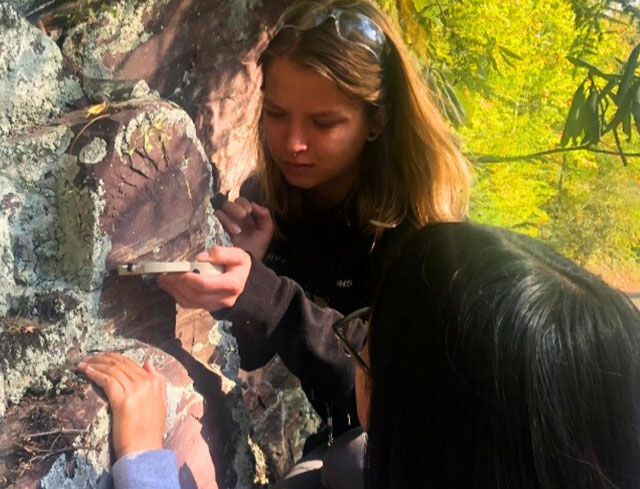Western Carolina University’s Indigenous Roots
04 Dec 2024
And recognition of its Cherokee history
Story and photos by EMMA POTTS

Western Carolina University (WCU) was established and built in Appalachia’s Northern Cullowhee Valley near the Tuckasegee River. Archeological digs indicate that the Cherokee have lived here for 10,000 years. However, in 1836, they were forced to cede their ancestral land to the United States government. Ultimately, about 15,000 tribal members walked over 1000 miles to land set aside for them west of the Mississippi River. Thousands died along the route that came to be known as The Trail of Tears.
A small band of Cherokees living along the Oconaluftee River in what is now Cherokee, NC, negotiated to remain by agreeing to give up tribal membership and assimilate with the white population. By the early 20th century, this population had formed a tribe again and had purchased back some of their traditional land, the Qualla Boundary. They received federal designation as the sovereign Eastern Band of Cherokee Indians (EBCI.)
To the west, white European settlers opened their first school in 1839, a semi-secondary school that would evolve across decades to become Western Carolina University. The town retained its Cherokee name based on the tribe’s phrase joolth-cullah-wee, a nod to a giant hunter, Judaculla, who was believed to have lived there; WCU is built on what is considered “a named Cherokee town and a traditional sacred place.”
Members of WCU’s community have been working for the past few years to better recognize and commemorate this land's accurate and complete history. WCU Professor Andrew Denson feels this is an important, ongoing project because he hopes it “will reinforce the need for the university to act as a good partner with the Eastern Band in initiatives like Cherokee language education and help remind us of our responsibilities.”
Much of what is known about the history was derived through archeological finds such as the ancient earthwork mound where the Killian Building and Annex are today. This would have also been where a village was, with many others in the surrounding areas. Denson claimed that the school has not always done the right thing by the Cherokees. He stated that earlier on, “the school took little notice of the EBCI, even though there were Cherokee students at Western as early as the 1920s.” This did not change until WCU started participating in “strategic partnerships with the EBCI” in the late 1960s and 1970s.
Excavations have been conducted since then to uncover historical artifacts. In 1992, three different sites were excavated. One unveiled Qualla pottery, beads, animal bones, bottle glass, etc. In 2003, one excavation was conducted on campus, where WCU students and archaeologists collaborated with an EBCI historic preservation officer. Objects were discovered and determined to date back as long as 10,000 years. Other sites have been excavated on and off campus throughout the 1970s to early 2000s.
An article on the WCU website featured a commemorative celebration between the EBCI and WCU in 2018, when the iconic “wi” sculpture was unveiled. The character from the Cherokee syllabary celebrates, in this context, the relationship between the university and its Indigenous heritage. A few years later, a Land Acknowledgement was written and officially signed on May 15, 2021, by Richard Sneed, Principal Chief of the EBCI, and Kelli R. Brown, former Chancellor of WCU. Their Vision in the acknowledgment reads as follows: “Western Carolina University seeks to embrace our place, connect with tribal communities, and enable the success of each Indigenous student. We reaffirm our commitment to these goals and recognize that the entire WCU community is responsible for this success.”
There are other initiatives taking place now and planned for the near future. The school is working on a “campus-wide effort to interpret Cullowhee’s Cherokee history and identity.” Other efforts have been made in the past, such as rotating exhibits at the Mountain Heritage Center and certain aspects of Mountain Heritage Day.
According to Dr. Denson’s colleague, Associate Provost for Academic Affairs Dr. Carmen Huffman, “[the] process has been a joint effort between WCU and the EBCI to design signage and exhibits throughout campus that capture both the history of this place but also the living, modern culture of the Indigenous Cherokee people.” The Mountain Heritage Center has also been working with Dr. Denson on a traveling exhibit focused on the struggles that the Cherokees faced earlier, such as lacking the right to vote. While there was a lack of effort in the past, much is now being done to represent this history better and to reflect the true ideals and community of WCU.













